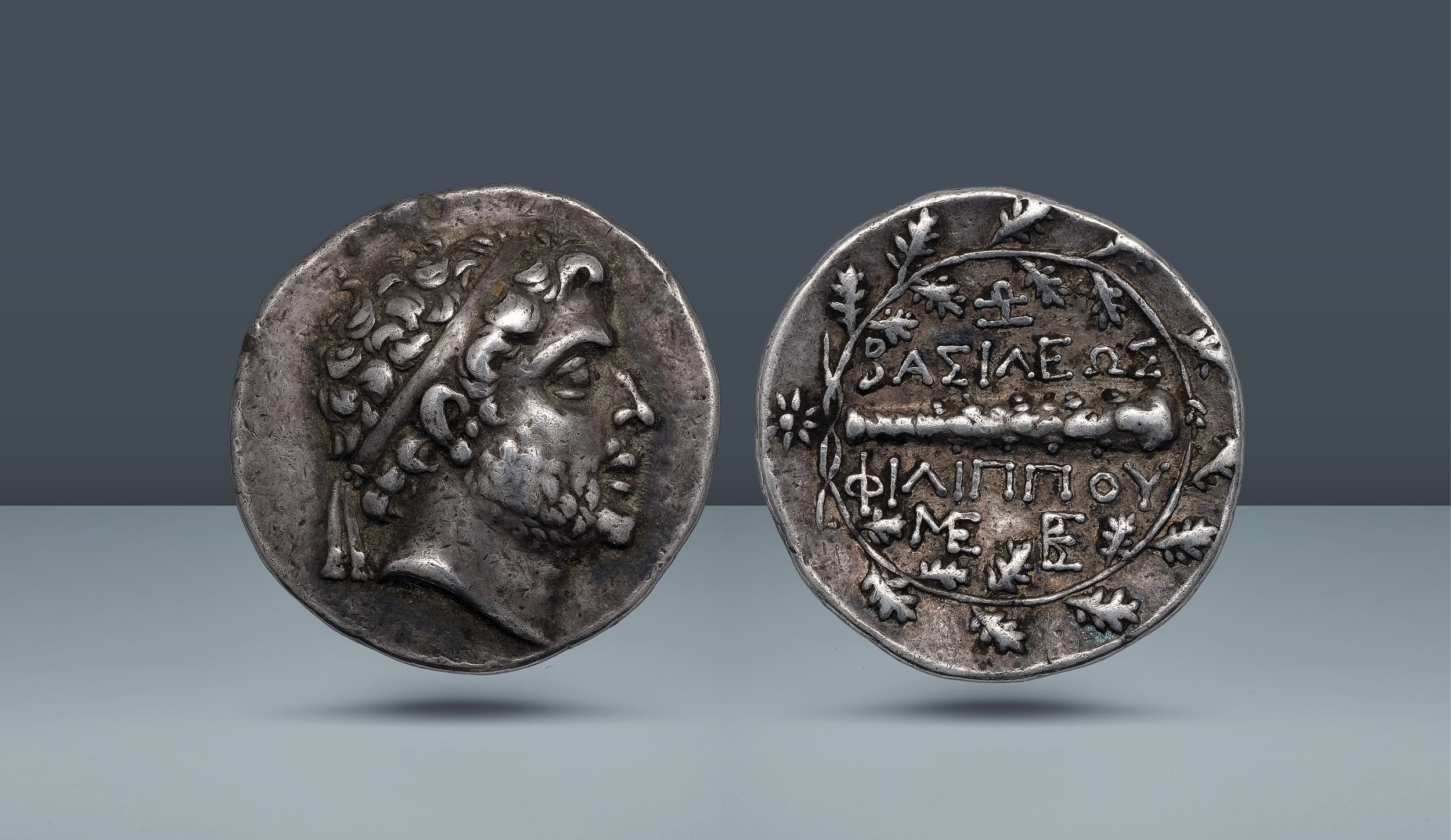KINGS of MACEDON, Macedonia. Philip V, 221-179 BC Pella, c. 184-179 BC
KINGS of MACEDON, Macedonia. Philip V, 221-179 BC Pella, c. 184-179 BC
AR Didrachm, 8.40g (24mm, 12h).
Diademed and bearded head of king / ΒΑΣΙΛΕΩΣ ΦΙΛΙΠΠΟY Club to right with name of king above and below. In field, three monograms
Pedigree: From the duplicates of the British Museum, London and from the R.C. Lockett and Dr. Hotz Collection. Ex Ratto, 26 April 1909, lot 1976. Ex Naville & Cie 5 (Luzern, 1923), lot 1469. Ex Glendining & Co., London - Lockett Coll. VI/2, 12 Feb 1958, lot 1398. Ex Münzen und Medaillen AG, Basel 88 (1999), lot 154.
References: Mamroth, Philipp (this example mentioned). SNG Locket 1530 (this coin)
Grade: An impeccable pedigree and owned by the prolific collector Richard Cyril Lockett. Pretty cabinet toning with minor overall wear. A delightful piece. EF
gk1203
Scroll down for more information about this coin.
Philip V had the distinction of being the last real Greek king to wage a major battle before complete domination by Rome. With Rome busy fighting Carthage, Philip V gathered the troops and attempted to gain territory in the Aegean with only Rhodes and Pergamum remaining hostile. Unfortunately the great naval battle between the powers resulted in a loss by Philip.
This battle did not ultimately decide the fate of Macedon. Philip continued his course and attempted to overpower the emerging Roman armies. He eventually signed a peace treaty with Rome but his enemies at Pergamum continued to create tensions and suspicion between Rome and Macedon. Infighting within the family between Philip’s two sons resulted in one son being executed by his father. Philip died only a year later and was replaced by his elder son Perseus who ruled as the last king of Macedon.
Philip V was routinely compared to Alexander the Great. He was evidently a very attractive young man and commanded the attention that Alexander had some 100 years earlier.
This coin has an illustrious pedigree going back to 1909. It was part of the Lockett collection and was a duplicate auctioned off by the British Museum. This practice of trading duplicates was common in the early 1900’s and continued well into the 1970’s.


